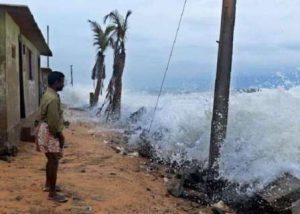India to Face More Extreme Weather Events
There will be increase in surface air temperatures and humidity levels; increase in heat waves, heavy rains, strong winds and cyclones.
On the basis of mathematical modelling it is understood that India is expecting a temperature change of 2° C by the end of year 2100, said Dr Madhavan Nair Rajeevan, Secretary, Ministry of Earth Sciences. He was delivering a lecture under eminent scientist category of CSIR-Summer Research Training Programme (CSIR-SRTP), 2020 on the topic“Science of Climate Change”.  He told that India is ready with its Earth System Modelling and climate change projections which is a mathematical model and requires huge computation power.
He told that India is ready with its Earth System Modelling and climate change projections which is a mathematical model and requires huge computation power.
There will be increase in surface air temperatures and humidity levels; increase in heat waves; increase in extreme weather like heavy rains, strong winds, intense tropical cyclones, convective storms; no change in mean monsoon rainfall; an increase in variability of monsoon – more floods and droughts, and it is likely that there will be an increase in sea level and coastal erosion, said Dr Rajeevan.
He also pointed out that the climate change scenario is also affecting the rainfall trend in India. Monsoon rainfall over the country as a whole has been very stable during the last 110 years or so. But there are appreciable regional trends/changes in the rainfall pattern and substantial change has happened in the last 30-40 years in terms of extreme rainfall event and the consequence is heavy precipitation or cloud burst in many parts of India.
Also Read : Land And Climate Change Critical Correlation And Impacts
In the recent studies it has been established that the cause of climate change is mainly human activities now. Anthropogenic (human) activities lead to variations in atmospheric composition (mixing rations of carbon dioxide and ozone, aerosol loading etc.) and the variation of land surface due to land use (deforestation, desertification etc).
Talking about the global scenario of climate change he said that everywhere climate is warming up in the globe and the warming is not uniform. Especially, the Arctic region warming is very high which is known as Arctic amplification. Arctic sea ice is melting and there is drastic change after 1990s which is very precarious for the future and by 2050 there may be Arctic sea without sea ice. There is drastic change in average global temperature from mid-70’s onwards. Accordingly, sea level is rising at the rate of 3 mm/year which has come to light from data analysis from 1993 to 2019, but as a whole sea level rise is also not uniform worldwide and if this trend of increase in sea level goes on it will an alarming situation in the long run. Another effect of global warming is the ocean heat content which is increasing not only in the surface but down to first 100-150 metres from the surface. (India Science Wire)
